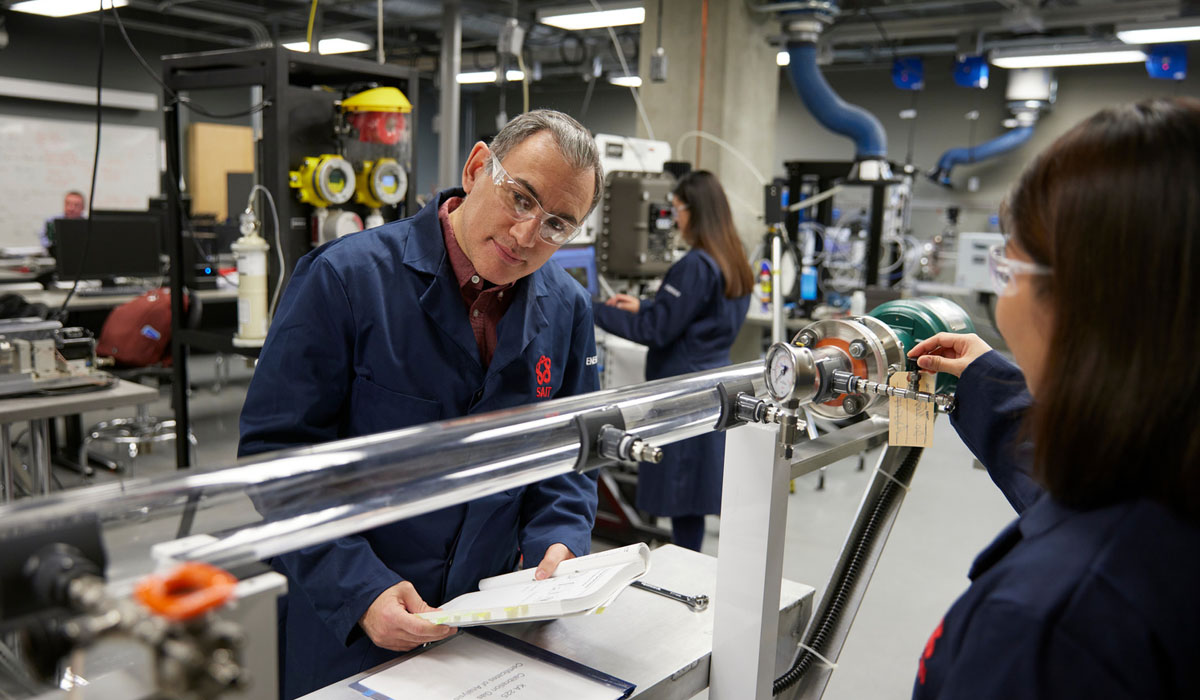Overview
Industrial instrumentation is critical to modern industries, ensuring efficiency, accuracy, and safety in automated systems. As automation continues to grow, so does the demand for skilled professionals who can calibrate, maintain, and diagnose these systems across manufacturing, energy, and process control industries.
The Industrial Instrumentation Certificate of Achievement is a self-paced program that provides a structured learning path from fundamental concepts to advanced topics. Designed to bridge theory and practical application, this program prepares you for job-ready tasks in electrical motors and meters, control valves, instrument maintenance and calibration, integrated circuits, and basic process design—core components of industrial instrumentation.
This program is ideal for:
- industry professionals in oil and gas, power generation, and chemical processing looking to deepen their theoretical knowledge
- aspiring instrumentation technicians with a background in math, physics, or science seeking a career transition
- professionals looking to advance their careers by upskilling in instrumentation systems
- technical staff, including electricians, mechanical technicians, and process operators, needing additional instrumentation knowledge.
Whether you're entering the field or enhancing your expertise, this program equips you with the skills to succeed.
To be successful in this program, we recommend you have:
- A minimum 50% in High School Grade 12 Math, Physics and/or Chemistry
If you’re pursuing the certificate, complete INST 155 first and note mandatory prerequisites for remaining certificate courses.
Upon successful completion of this program, you’ll be able to:
- apply fundamental principles of calculus, physics, and chemistry to instrumentation and industrial processes
- measure, analyze, and interpret units of measurement, energy transformations, and work in
- utilize Boyle’s, Charles’s, and Joule’s laws in practical applications of pressure, volume, and temperature relationships
- operate and troubleshoot pneumatic, digital, and wireless instrumentation systems for process monitoring and control
- perform and document calibration procedures, ensuring accurate measurement of pressure, flow, temperature, and force
- understand and apply electrical circuit principles, including AC/DC systems, signal transmission, and 4 to 20 mA current signals
- configure and integrate industrial instrumentation systems, including FOUNDATION Fieldbus and process connections
- implement automation and control strategies using Programmable Logic Controllers (PLCs), relay systems, and discrete control elements
- analyze and optimize process control systems, including PID controller tuning, signal characterization, and motor control
- apply industry best practices for process safety, instrumentation reliability, and system protection.
Program outline
To successfully complete this certificate program, you are required to complete a total of three mandatory courses. All supporting course materials and resources are accessible online in the Brightspace (D2L) learning platform.
Required courses & electives
How to apply for this certificate
Once you have registered for any course offered in this certificate, you will be automatically eligible to complete the certificate. You will have up to three years to complete this program. You may track your progression by signing in to your Continuing Education student account.
Certifications and professional designations
Upon successful completion of all required courses in this program, you’ll receive an electronically issued official SAIT Certificate of Achievement and transcript. You’ll be able to self-print proof of completion documents from your Continuing Education student account. Parchments are not issued for individual courses.
Costs
This program consists of three courses with varying fees. Fees include access to all course-related materials and resources found in Brightspace (D2L).
Please review the individual course pages for this certificate program to determine costs and to learn more about additional learning materials including textbooks.
Financial support
Financial opportunities are available to help pay for your course fees. Learn more about how to reduce your education or training costs with available awards, bursaries, loans and grants, including the Canada Alberta Productivity Grant.
Careers and opportunities
Skills learned in this program can lead to careers as an Industrial Electrician, Electronics Technologist, Industrial Instrument Technician and more.
Expect to start at the entry level, and as you gain experience and additional education, your career opportunities will expand.

Oki, Âba wathtech, Danit'ada, Tawnshi, Hello.
SAIT is located on the traditional territories of the Niitsitapi (Blackfoot) and the people of Treaty 7 which includes the Siksika, the Piikani, the Kainai, the Tsuut’ina and the Îyârhe Nakoda of Bearspaw, Chiniki and Goodstoney.
We are situated in an area the Blackfoot tribes traditionally called Moh’kinsstis, where the Bow River meets the Elbow River. We now call it the city of Calgary, which is also home to the Métis Nation of Alberta.



